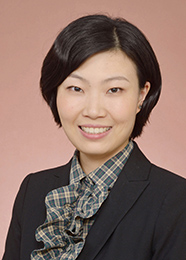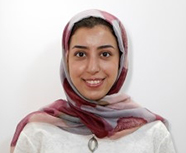Congratulations to Associate Professor May Mei and recent PhD graduate Dr Mina Rajabi, our 2022 recipients of SJWRI Research Publication of the Year awards. These awards, announced at our Faculty end-of-year function last month, celebrate the best research articles authored by our academic staff and postgraduate students in the preceding year.
Research Publication of the Year: Associate Professor May Mei
This award is to recognise excellence in research by acknowledging the research calibre and effort required to publish in high impact journals in science and dentistry. To be eligible for the 2022 award, the manuscript must have been accepted for publication between 1 January and 31 December 2021, with the nominee as primary author. The recipient for this year is Associate Professor May Mei.
Dai, L.L., Nudelman, F., Chu, C.H., Lo, E.C.M., & Mei, M.L. (2021) The effects of strontium-doped bioactive glass and fluoride on hydroxyapatite crystallization. Journal of Dentistry, 2021, 105, 103581. Accepted 5 January 2021. https://doi.org/10.1016/j.jdent.2021.103581
Associate Professor Mei joined the Department of Oral Rehabilitation in 2019 from the University of Hong Kong. Her research focuses on two themes, the use of silver diamine fluoride in caries management and developing bioactive materials for caries management.
She was a recipient of the International Association for Dental Research Centennial Emerging Leaders Award in 2020.
This publication investigated the effects of a new strontium-doped bioactive glass and fluoride on hydroxyapatite crystallization. This study was carried out by an interdisciplinary team bridging dentistry and chemistry, with international collaboration between the University of Otago, the University of Hong Kong and the University of Edinburgh). Associate Professor Mei was principal author of the paper, which including conceptualization, design and supervision of the project, and revision the manuscript. She is sole corresponding author of the paper. Journal of Dentistry is the top journal in Restorative Dentistry, ranking No.11 in dentistry journals overall with an impact factor of 4.991 (2021). The Scopus citation of this paper to end 2022 is 10.
Abstract
Objectives: This study investigated the effects of a new strontium-doped bioactive glass and fluoride on hy-droxyapatite crystallization.
Methods: We designed an in vitro experiment with calcium phosphate (CaCl2⋅2H2O + K2HPO4 in buffer solution) with different concentrations of strontium-doped bioactive glass (1 mg/mL or 5 mg/mL), and different con-centrations of fluoride (0 ppm, 1 ppm or 5 ppm). Tris-buffered saline served as negative control. After incubation at 37 ℃ for 48 h, the shape and organization of crystals were examined by transmission electron microscopy (TEM) and electron diffraction. Structure of the crystals was assessed by powder X-ray diffraction (P-XRD) and unit cell parameters were calculated. Characterization of the crystals were performed by Raman spectroscopy and Fourier Transform Infrared Spectroscopy (FTIR).
Results: TEM and selected-area electron diffraction revealed that the precipitates in all experimental groups were crystalline apatite. There was an interaction between strontium and fluoride with different concentrations on crystal thickness (p = 0.008). P-XRD indicated the formation of strontium-substituted-fluorohydroxyapatite and strontium-substituted-hydroxyapatite in the groups with both bioactive glass and fluoride. Expansion or contraction of crystal unit cell was influenced by the concentrations of strontium and fluoride. Raman spectra showed strong phosphate band at 960 cm-1 in all experimental groups and displayed no obvious shift. FTIR results confirmed the formation of apatite.
Conclusions: The results of this study suggest that strontium-doped bioactive glass and fluoride have synergistic effects on hydroxyapatite crystallization.
Clinical Significance: Strontium-doped bioactive glass and fluoride have synergistic effects on hydroxyapatite crystallization by producing strontium-substituted-hydroxyapatite and strontium-substituted- fluorohydroxyapatite with enhanced bioactivity and reduced solubility which could be beneficial for caries management.
Postgraduate Research Publication of the Year: Dr Mina Rajabi
This award is to recognise excellence in postgraduate student research by acknowledging the research calibre and effort required to publish in high impact journals in science and dentistry. To be eligible for the 2022 award, the publication must have been accepted between 1 January and 31 December 2021, and have been primarily written by a Masters or Doctoral research student whose primary enrolment is through the SJWRI or Faculty of Dentistry. The recipient is Dr Mina Rajabi.
Rajabi, M., McConnell, M., Cabral, J., & Ali, A. (2021). Chitosan hydrogels in 3D printing for biomedical applications. Carbohydrate Polymers, 250, 117768. Accepted 5 February 2021. https://doi.org/10.1016/j.carbpol.2021.117768
Mina recently completed a PhD under the lead supervision of Associate Professor Azam Ali, whose research group joined the Faculty of Dentistry in 2021. Her thesis research, under the title of 'Chitosan-based 3D Printing Scaffolds for Bone Tissue Engineering' investigated the development of new functional hydrogel inks for use in 3D-printing bone tissue-engineered scaffolds.
This paper, published in the journal Carbohydrate Polymers (impact factor 10.723) in 2021, is a review article which highlights the properties of chitosan biomaterials, discusses physical and chemical approaches for making chitosan-based novel hydrogel inks for biomedical applications using 3D biofabrication/printing technologies, and presents current challenges and future development opportunities. This paper enables readers to select the appropriate mechanism to prepare chitosan inks that best suit their needs when designing 3D printed constructs for specific target tissues. The impact this research has made in academia and industry, and the prominence of this journal in the field of Bioengineering as well as Plastics and Polymers (rank #1), has led to the article being cited 80 times to date.
Abstract
Tissue engineering and regenerative medicine have entered a new stage of development by the recent progress in biology, material sciences, and particularly an emerging additive manufacturing technique, three-dimensional (3D) printing. 3D printing is an advanced biofabrication technique which can generate patient-specific scaf-folds with highly complex geometries while hosting cells and bioactive agents to accelerate tissue regeneration. Chitosan hydrogels themselves have been widely used for various biomedical applications due to its abundant availability, structural features and favorable biological properties; however, the 3D printing of chitosan-based hydrogels is still under early exploration. Therefore, 3D printing technologies represent a new avenue to explore the potential application of chitosan as an ink for 3D printing, or as a coating on other 3D printed scaffolds. The combination of chitosan-based hydrogels and 3D printing holds much promise in the development of next generation biomedical implants.
Congratulations to Associate Professor Mei and Dr Rajabi on receiving these awards.
 Associate Professor May Mei.
Associate Professor May Mei.
 Dr Mina Rajabi.
Dr Mina Rajabi.
